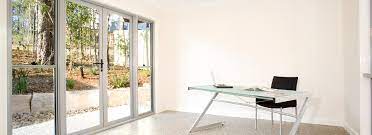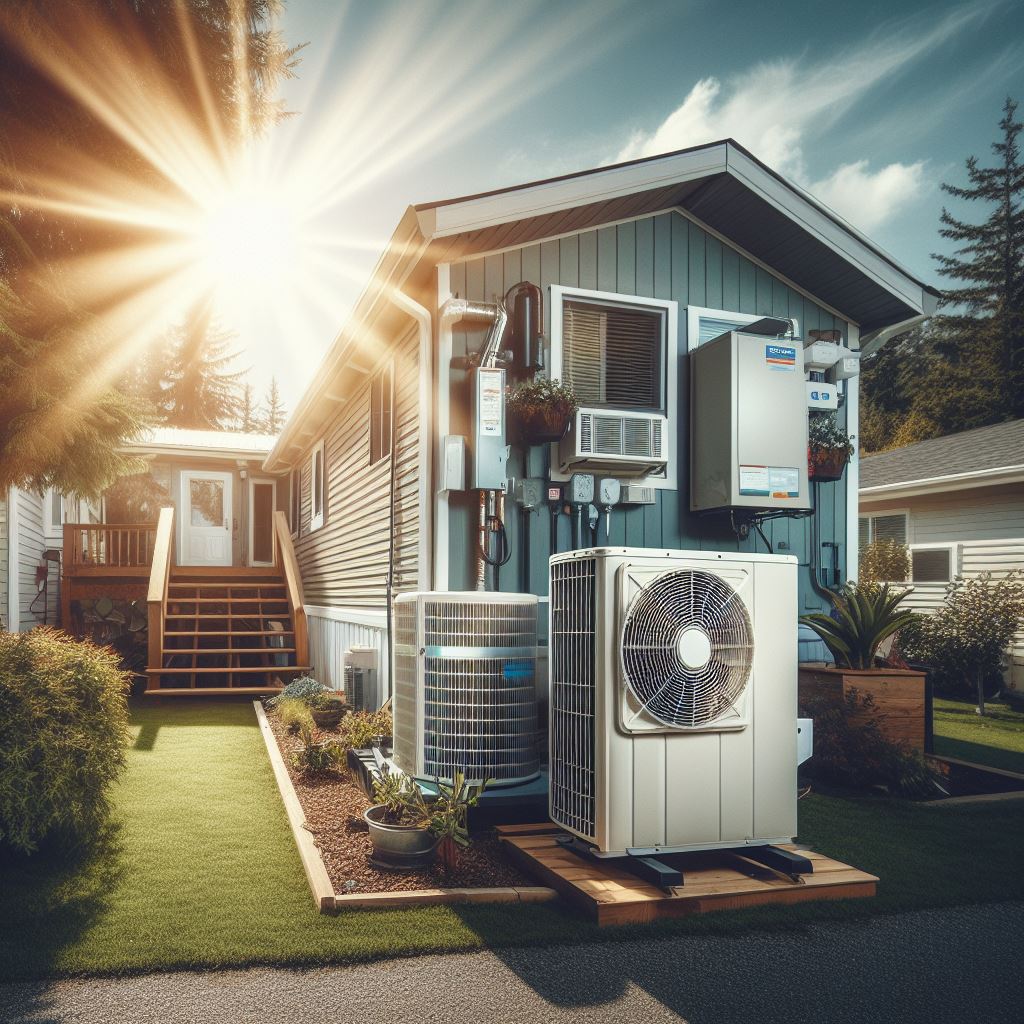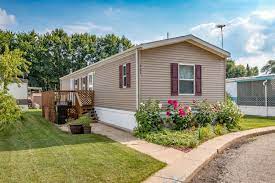Did you know that it is not called a mobile home because you can move it from one location to another? Stay on and read to the end for insightful knowledge about mobile homes. We will give useful information to those looking to own a home.

James and Laura Sweet started “Sweet Homes” to solve the housing problems after World War II. In the 1950s, the demand for sweet home-style housing increased, and various manufacturers took up the challenge. Many set up factories in Mobile, Alabama, to take advantage of cheap labor. Since this is where they were mass-produced in Mobile, they came to be referred to as mobile homes.
What is a Mobile Home?
A mobile home is a prefabricated dwelling structure built in a factory and then transported to a site for installation.
Mobile homes are typically constructed on a chassis with wheels, making it possible to move them from one location to another. Mobile homes are mostly single-story and lightweight structures.
Mobile homes come in various sizes and layouts, ranging from small single-wide units to larger double- or triple-wide units that offer more living space. They come with various features and amenities according to their sizes, including kitchens, bathrooms, bedrooms, and living spaces.
Mobile homes are sometimes referred to as “manufactured homes.” We often use these terms interchangeably, even though they refer to different concepts. Mobile homes and manufactured homes share a history, which is why many may confuse one for the other.
One of the main distinguishing features between the two is their date of manufacture. According to HUD, factory-built homes manufactured before June 15, 1976, are mobile homes, while those prefabricated after June 1976 are manufactured homes.
The HUD Code of 1976 established federal standards for factory-built homes, aiming to enhance their quality, safety, and durability. This ended the unregulated mass production of mobile homes and ushered in the era of regulated manufactured home prefabrication.
What are the Different Types of Mobile Homes?
Mobile homes come in different sizes and layouts, each offering unique features and characteristics. The most common types include:
Single-wide Mobile Homes
Single-wide homes are narrower and more compact, usually around 14 to 18 feet in width and 60 to 80 feet in length. They are prefabricated and transported in one piece, making them more affordable than larger models.
Double-wide Mobile Homes
Double-wide homes consist of two single-wide units joined together to create a wider living space. They offer more square footage and often feature larger rooms and more amenities. Double-wide homes are transported in two separate parts and assembled on-site.
Triple-wide Mobile Homes
Triple-wide homes are similar to double-wide homes but feature three separate units joined together to create an even larger living space. These homes offer even more square footage and may include additional features, such as multiple bathrooms and spacious living areas.

What are Some Distinctive Features of Mobile Homes?
Mobile homes have some distinctive features that set them apart from traditional stick-built homes. Here are some key features of mobile homes:
1. Construction
Mobile homes are built in a factory setting, often on an assembly line, using standardized construction methods and materials. This controlled environment allows for efficient production and consistent quality.
2. Transportability
One of the defining features of mobile homes is their ability to be transported from the factory to the site where they will be installed. They are typically built on a steel chassis with wheels, allowing for easy towing or hauling to the desired location.
3. Size and Layout
Mobile homes come in various sizes and layouts, but they are generally smaller and more compact than traditional homes. They are available in single-wide, double-wide, and triple-wide configurations, with different floor plans and room arrangements to suit different needs and preferences.
4. Affordability
Mobile homes are often more affordable than traditional homes, making them an attractive option for first-time homebuyers or those looking for more affordable housing options. They typically have lower upfront costs and can be a cost-effective alternative to renting.
5. Insulation and Energy Efficiency
Mobile homes are designed to be energy-efficient and well-insulated, with features such as double-pane windows, insulated walls, and energy-efficient heating and cooling systems. This helps to reduce energy costs and improve comfort for occupants.
6. Customization Options
While many mobile homes were built in unregulated factories during the mass production period, buyers have several customization options to choose from. This may include various finishes, fixtures, and upgrades to personalize the home to their preferences.
We recommend visiting Mobile Home Parts Store to shop for materials for your mobile.
What are the Advantages of Owning a Mobile Home?
Owning a mobile home offers several advantages, making it an attractive housing option for many individuals and families. Some of the key advantages include:
1. Affordability

Mobile homes are often more affordable than traditional stick-built homes, making them an available option for those on a tight budget. Lower upfront costs and ongoing expenses make homeownership more achievable for many.
2. Flexibility
Mobile homes offer greater flexibility in terms of location compared to traditional homes. They can be placed on leased land in mobile home parks or communities, allowing homeowners to choose a location that suits their lifestyle and budget.
Additionally, because they are movable, mobile homes offer the option to relocate if desired, although this may attract additional expenses.
3. Amenities
Mobile homes come in various sizes and layouts, offering a range of amenities to suit different needs and preferences. You can upgrade or customize your mobile home with modern features, like kitchens, bathrooms, and other living space amenities.
4. Energy Efficiency
Mobile homes are designed to be energy-efficient, with features such as insulated walls, double-pane windows, and energy-efficient heating and cooling systems. This can help reduce energy costs and make homeownership more affordable over time.
5. Community Atmosphere
Mobile home parks and communities often offer a sense of community and camaraderie among residents. Many parks organize social events, activities, and amenities such as playgrounds or swimming pools, creating a supportive and inclusive environment for homeowners.
6. Lower Maintenance
Mobile homes typically require less maintenance compared to traditional homes, as they are built to be durable and low-maintenance. This can help save time and money on upkeep and repairs.
7. Quick Construction
Mobile homes are built in a factory setting, which allows for efficient production and quicker construction times compared to traditional stick-built homes. This means homeowners can move into their new homes sooner and start enjoying the benefits of homeownership sooner.
Disadvantages of Owning a Mobile Home
While mobile homes offer several advantages, there are also some potential disadvantages to consider before purchasing one. These include:
1. Depreciation
Unlike traditional stick-built homes, mobile homes tend to depreciate over time rather than appreciate. This can make it more challenging to build equity in the home and may affect resale value if the homeowner decides to sell in the future.
2. Financing Challenges

Mobile homes may be more difficult to finance compared to traditional homes. Some lenders may be hesitant to provide loans for mobile homes due to perceived risks associated with depreciation and mobility. Additionally, interest rates and terms for mobile home loans may be less favorable compared to conventional mortgages.
3. Mobility Restrictions
While the ability to transport a mobile home can be advantageous in some cases, it can also be a disadvantage. Moving a mobile home can be costly and may require obtaining permits, hiring specialized movers, and complying with local regulations. Additionally, not all mobile homes are designed to be moved, particularly older models.
4. Land Lease Fees
Many mobile homes are located on leased land in mobile home parks or communities, which typically require homeowners to pay monthly or annual lease fees. These fees can vary depending on the location and amenities of the park, adding to the overall cost of homeownership.
Overall, mobile homes are easily accessible and affordable, especially for first-time homeowners. While they offer several advantages, potential buyers should carefully consider the potential disadvantages and weigh them against their individual needs and circumstances before making a decision.
Conclusion
Mobile homes are a popular and smart solution for affordable living in the modern day. As housing prices increase and building materials remain at high prices, mobile homes allow for people to become homeowners without big mortgages and stress.
One way to gain appreciation on your home, whilst keeping things affordable by living in a mobile home, is to purchase the land that the mobile home sits on. This way, although the mobile home may depreciate, the land it occupies will appreciate and homeowners can resell at a gain.
Before delving into your first purchase, learn more about mobile homes and the options you have at hand.
Head back to TinyRoam.com home!



